Revealing the Truth: How dog collars affect dog’s temperament

How dog collars affect dog’s temperament
Are you a proud dog owner who wants to ensure the utmost comfort and happiness for your furry friend? Well, look no further! In this blog post, we dive deep into an often overlooked aspect of your canine companion’s well-being – their collar. Yes, that seemingly innocuous accessory plays a significant role in shaping your dog’s temperament. Join us as we unravel the fascinating world of dog collars and discover how they can impact our beloved pets’ overall behaviour and mood. Get ready to gain invaluable insight into choosing the perfect collar that will not only keep your pup safe but also enhance their temperament – because a happy dog equals a happy life!
Introduction to Dog Collars and Their Impact on Temperament
Dog collars are a common accessory for pet dogs, used for various purposes such as identification, training, control, and fashion. However, many dog owners are not aware of the impact that different types of collars can have on their dog’s temperament. In this section, we will discuss the basics of dog collars and how they can affect your furry friend’s behaviour.
What is a Dog Collar?
A dog collar is a piece of equipment worn around a dog’s neck for various purposes. It typically consists of a strap or material with an attached buckle or clasp for adjusting the size. Some collars may also have additional features such as tags or bells.
Different Types of Dog Collars
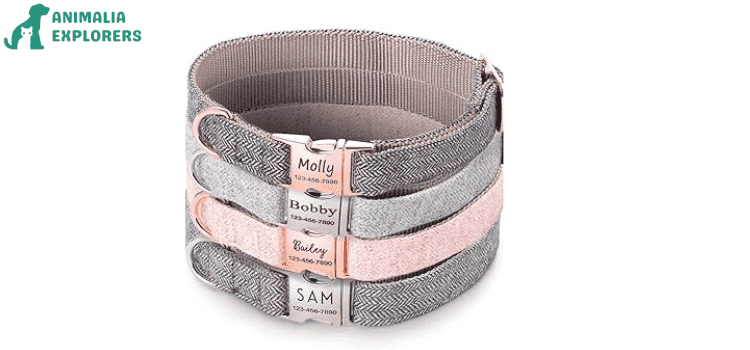
There are various types of dog collars available in the market today, each designed for specific purposes. Let’s take a look at some common types:
- Flat Buckle Collar: This type of collar is the most traditional and common choice among pet owners. It has a simple design with an adjustable strap and buckle closure.
- Martingale Collar: Also known as “limited slip” or “no-slip,” this collar has two loops – one large loop that goes around the neck and another small loop that tightens when pulled but does not fully close like choke collars.
- Choke Chain/Slip Collar: These collars consist of a metal chain with rings at both ends that tighten around the neck when pulled. They are commonly used for training purposes but can cause serious injuries if not used correctly.
- Prong/Pinch Collar: Similar to choke chains, these collars have metal prongs that apply pressure to the dog’s neck when pulled. They are also primarily used for training but can be harmful if not used properly.
- Martingale Chain: A combination of a martingale and choke chain, this type of collar has a limited slip loop with a chain attached at each end. The chain applies pressure around the neck when pulled.
- Harness: Unlike collars, harnesses distribute pressure across the dog’s chest and shoulders rather than their neck. They are often recommended for small dogs or dogs with respiratory issues.
The Traditional Collar: Pros and Cons
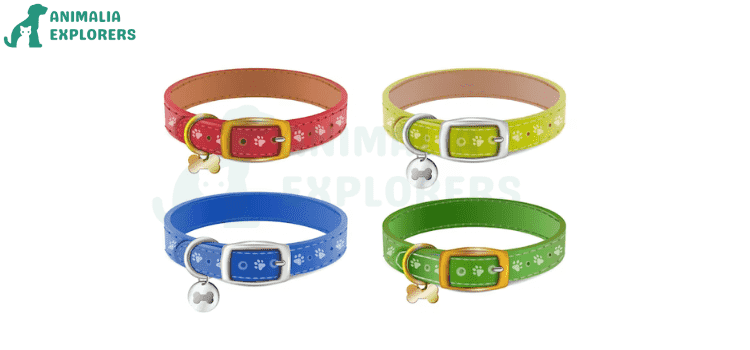
Collars are one of the most common forms of identification and restraint for dogs. They have been used for centuries as a way to control and train dogs, with different styles and designs evolving. One of the most traditional types of collars is the flat collar, also known as the traditional collar. In this section, we will take a closer look at the pros and cons of using this type of collar for your dog.
Pros
- Easy to use
- Affordable
- Wide variety
- Identification
Cons
- Limited control
- Potential neck injury
- Not suitable for training
- Can get caught or tangled
The Martingale Collar: A Safer Alternative?
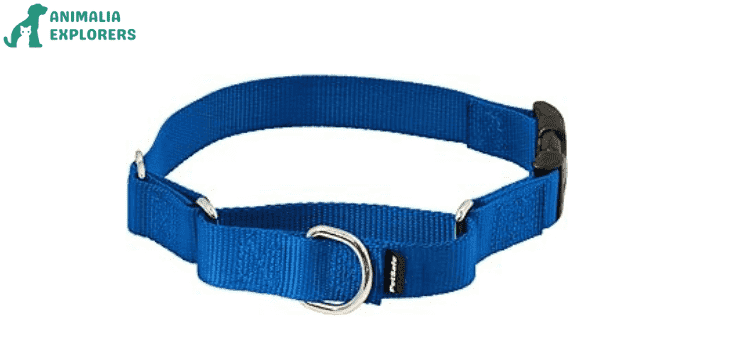
The Martingale collar has become a popular choice among dog owners as a safer alternative to traditional collars. This unique type of collar is designed to provide more control and prevent the risk of choking or injury that can come with other types of collars.
What sets the Martingale collar apart is its special design, which includes two loops instead of one. The main loop goes around the dog’s neck like a traditional collar, while the second loop tightens when tension is applied. This feature prevents the collar from slipping off your dog’s head and ensures a secure fit without causing discomfort or harm.
One of the main reasons why many pet owners opt for this type of collar is because it eliminates the risk of choking. Traditional collars can be dangerous for dogs, especially those who tend to pull on their leash during walks. When applying pressure, these collars can tighten and restrict airflow, leading to potential damage to your dog’s trachea or even suffocation in extreme cases.
In contrast, Martingale collars distribute pressure evenly around the neck, avoiding any strain on sensitive areas such as the throat or spinal cord. This not only makes them safer but also more comfortable for dogs to wear.
Furthermore, unlike choke chains or prong collars that use correctional methods involving pain or discomfort, Martingale collars rely on gentle yet effective techniques to train your dog. The tightening action simulates physical touch rather than causing actual pain, making it an ideal option for sensitive dogs or those with behavioural issues.
Aside from their safety features, Martingale collars are also suitable for training purposes. They provide better control over your dog’s movements, making it easier to redirect their behaviour and prevent them from pulling or lunging forward during walks. The tightening action can also help reinforce commands and encourage good leash manners.
Shock Collars: Do They Harm Your Dog’s Temperament?

Shock collars, also known as electronic collars or e-collars, have been a subject of controversy in the dog training community for many years. These collars are designed to deliver an electric shock to a dog when triggered by a remote control or automatic device. The idea behind using shock collars is that the unpleasant sensation will deter undesirable behaviours and encourage obedience.
However, the use of shock collars has raised concerns about their potential harm to a dog’s temperament. Many experts argue that these collars can cause physical and psychological damage to dogs, leading to long-term behavioural problems.
Physical Effects on Dogs
The most obvious concern with shock collars is the physical discomfort they inflict on dogs. The electrical shocks emitted from these devices may range from a mild tingling sensation to intense pain, depending on the strength setting and duration of the shock. This physical discomfort can be distressing for dogs and may lead to negative associations with certain people, places, or situations.
Moreover, repeated exposure to electric shocks can result in adverse effects on a dog’s physical health. Studies have shown that prolonged use of shock collars can cause burns and lesions on a dog’s skin due to continuous contact with metal prongs. These injuries not only cause pain but also increase the risk of infection if left untreated.
Psychological Effects on Dogs
Besides physical harm, there is growing evidence suggesting that shock collars can have detrimental effects on a dog’s psychological well-being. The sudden jolt of electricity can trigger fear, anxiety, and stress in dogs, leaving them in a state of distress. Over time, this can lead to learned helplessness, where the dog learns that no matter what they do, they cannot escape the pain.
Moreover, shock collars may also cause dogs to associate the shock with their owner or trainer. This can damage the bond between the dog and their human companion, leading to fear and avoidance behaviours towards that person. It can also result in generalized fear and anxiety in other situations.
Long-Term Behavioral Problems
One of the most concerning effects of shock collars is their potential to cause long-term behavioural issues in dogs. The use of aversive training methods like shock collars has been linked to an increase in aggressive behaviours in dogs. This is because the dog may become fearful or defensive when anticipating a shock, leading them to react aggressively towards people or other animals.
Additionally, using a shock collar as a form of punishment can confuse and frustrate a dog. They may not understand why they are being punished and may associate it with something unrelated to their behaviour at the time. This can lead to a breakdown in communication between the dog and their owner and result in more behavioural problems.
Harnesses: A Gentle Option for Stronger Dogs
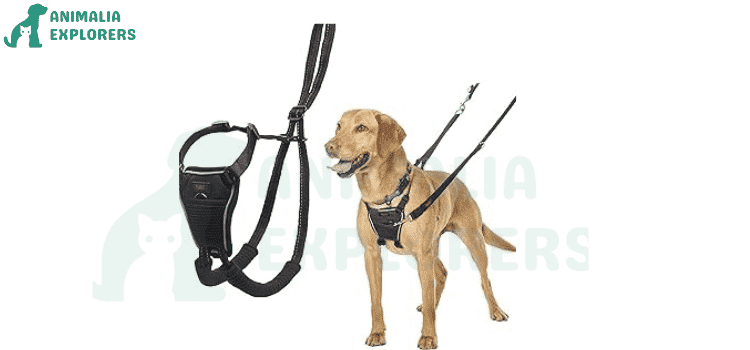
Harnesses have become increasingly popular among dog owners as a gentle and effective alternative to traditional collars. While collars may seem like the go-to option for controlling strong dogs, harnesses offer many benefits that are worth considering.
First and foremost, harnesses distribute the pressure of leash pulling across a larger area of the dog’s body, which is especially important for stronger breeds. This means that there is less strain on your dog’s neck and throat, reducing the risk of injury or discomfort. It also allows for better control and balance when walking your dog, making it easier to redirect their attention if they get too excited or agitated.
Moreover, harnesses are particularly useful for dogs with respiratory problems or neck injuries. Traditional collars can put pressure on the trachea and exacerbate breathing difficulties in certain breeds such as pugs or bulldogs. Harnesses eliminate this issue by evenly distributing pressure and avoiding any potential damage to the neck area.
Another advantage of harnesses is that they prevent dogs from slipping out of their collar during walks. Dogs who tend to pull or lunge forward can easily escape from a collar, putting themselves in danger if they run off into traffic or other hazards. With a properly fitted harness, this risk is significantly reduced as it wraps around more parts of the body.
How to Choose the Right Collar for Your Dog’s Temperament

Choosing the right collar for your dog is an important decision that can greatly impact their temperament. The type of collar you choose should not only reflect your personal preferences but also consider your dog’s temperament and behaviour. Here are some factors to consider when selecting a collar based on your dog’s temperament.
- Consider the size and breed of your dog: Different breeds may have different temperaments and require collars that cater to their specific needs. For example, a smaller breed like a Chihuahua may be more sensitive and require a gentler approach, while larger breeds like Great Danes may need more control.
- Assess your dog’s energy level: Dogs with high energy levels may benefit from collars that allow for better control, such as martingale or prong collars. These types of collars provide more leverage for owners to manage their dog’s behaviour without causing harm.
- Evaluate any existing behavioural issues: If your dog has any existing behavioural issues such as aggression or anxiety, it is important to choose a collar that will not exacerbate these problems. In this case, gentle options like flat buckles or harness collars may be more suitable.
- Think about training methods: Depending on the training method you plan on using with your dog, certain collars may be more appropriate than others. For instance, positive reinforcement techniques often work best with flat buckles or head halters rather than choke or shock collars.
- Take into account sensitivity: Some dogs can be more sensitive to certain types of collars, especially those with thick fur or sensitive skin. In these cases, it may be best to choose a collar made from softer materials like nylon or leather.
- Consider your dog’s age: Puppies may need softer and more gentle collars to ensure they do not get hurt as they grow and become more active. As they mature, you can gradually introduce different collar types based on their behaviour and temperament.
- Consult with a professional: If you are unsure about which collar would be best for your dog’s temperament, it is always wise to consult with a professional trainer or veterinarian. They can provide valuable insights and help you make the right decision for your dog.
Remember that every dog is unique and what works for one may not work for another. It may take some trial and error to find the right collar for your dog’s temperament, but with patience and consideration, you can find a collar that keeps them safe and comfortable while also promoting positive behaviour.
Tips for Proper Use

When it comes to the proper use of dog collars, there are a few important considerations to keep in mind to ensure the well-being and temperament of your furry companion. Here are some tips for using dog collars correctly:
- Choose the right type of collar
- Proper fitting
- Consistency is key
- Use positive reinforcement
- Check for wear and tear
- Take off during playtime
- Remove before bedtime
- Use caution with puppies
- Seek professional help if needed
By following these tips, you can ensure that your dog’s collar is being used properly and safely, promoting their well-being and fostering a positive relationship between you and your furry friend.
Conclusion
In conclusion, the choice of a dog collar goes beyond aesthetics; it’s a pivotal decision influencing a canine companion’s comfort, safety, and behaviour. As we’ve explored various collar types, from traditional options to harnesses and controversial shock collars, the importance of understanding our dogs’ individual needs has become evident. Opting for safer alternatives, such as martingale collars or harnesses, reflects a commitment to positive reinforcement and gentler training methods. Responsible dog ownership extends to proper fitting, consistent use, and an awareness of our pets’ unique characteristics. Ultimately, the right collar fosters not just a stylish look but a harmonious bond, ensuring our furry friends’ well-being and happiness.





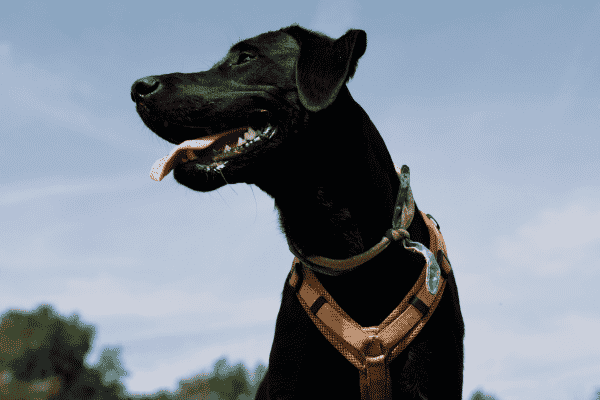

This website is phenomenal. The radiant data shows the creator’s dedication. I’m dumbfounded and expect more such astonishing substance.